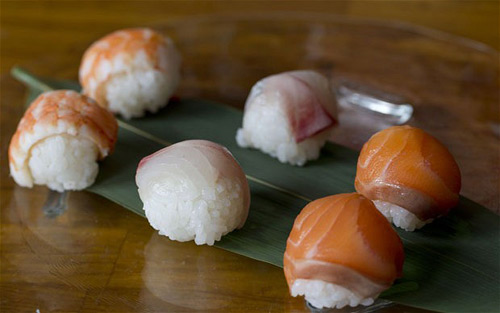汽车工业
重工/船舶
石油装备
安防/智能系统
新能源/环保
冶金矿业
化学化工
五金配件
教育培训
旅游文化

|
Japan'straditional cuisine, celebrated for its centuries-old cooking techniques and seasonal ingredients, has been added to the United Nation's cultural heritage list. The decision to protect Japan's traditional cuisine, known as "washoku", was made against a backdrop of rising concerns that fast food and western dishes are increasingly eclipsing the nation's culinary heritage. Japan will become only the second nation after France to have its national cuisine designated heritage status, a decision made by officials at a UNESCO meeting in Azerbaijan. While Japan has long been famed for its sushi, one of its most successful culinary exports, the nation has an expansive repertoire of traditional dishes beyond the raw fish snack. With its emphasis on harmony and the passing of the seasons, the art of washoku has been compared to writing haiku poems and normally consists of separate bowls of white rice, miso soup and pickles alongside main dishes. Other characteristics that have traditionally defined washoku include minimal meat, plenty of seafood and often the use of a fish stock base known as dashi. Masanori Aoyagi, the commissioner of Japan's Cultural Affairs Agency, explained to the UNESCO committee, that washoku is also regarded as important as it creates a feeling of social cohesion. Culinary purists in Japan have long expressed concern about the impact of the rise of Western diets in favour of washoku, a famously healthy diet with its copious fish, rice and seasonal vegetables. Washoku's designation as an Intangible Cultural Asset is likely to be welcomed by the government, not only in terms of its cultural heritage and potential health benefits, but also in relation to the economy. Its new status was confirmed exactly 1,000 days after the 2011 earthquake and tsunami triggered the on-going Fukushima nuclear crisis, shattering global confidence in the safety of the nation's previously respected food industry. Shinzo Abe, the prime minister, has set a goal to double Japanese exports by 2020, with officials most likely hoping that Japan's new culinary status will allay consumer fears and boost sales of rice and other ingredients overseas. |
以其历史悠久的烹饪技术和季节性食材而闻名的日本传统料理已经被列入联合国文化遗产名录。 保护日本传统料理——也被称为“和食”——的决定提出的背景是快餐和西餐的地位逐渐凌驾于传统菜肴之上。 在阿塞拜疆召开的联合国教科文组织会议决定,日本将成为继法国之后的第二个让自己国家的菜肴得到这一特定遗产称号的国家。 作为日本最成功的出口菜肴之一,虽然日本长期以来因寿司闻名,这些生鱼片小吃的背后还有着传统料理作为昂贵的保留节目。 和食的艺术重视和谐与季节变更,它常与俳句相提并论。和食通常包括放在不同碗中的米饭,味增汤,咸菜以及主菜。 和食的其他传统特征还包括最少的用肉量,大量的海鲜,并且经常用鱼汤做汤底,也称为“dashi(鱼汤)”。 日本文化厅委员正德青柳(Masanori Aoyagi)向联合国教科文委员会解释说,和食的重要还在于它能够创造出社会团结的感觉。 日本的烹饪纯粹主义者一直以来对于西餐的兴起对和食的冲击深感担忧。和食含有丰富的鱼类,米饭和时蔬,是著名的健康饮食。 和食成为非物质文化遗产将很可能受到日本政府的欢迎,这不仅关系到其文化遗产与潜在的健康效益,也与日本的经济有关。 申遗成功正好发生在2011年地震与海啸发生的1000天之后,当时引发的福岛核危机依然在持续。这令全球对日本从前备受推崇的食品产业的信心大跌。 首相安倍晋三已经定下2020年之前让日本出口额翻番的目标,官员们也很可能希望日本申遗成功能够减少消费者的顾虑并提高日本的大米和其他食材在海外的销量。 (译者 江雪Jeraint 编辑 丹妮) |